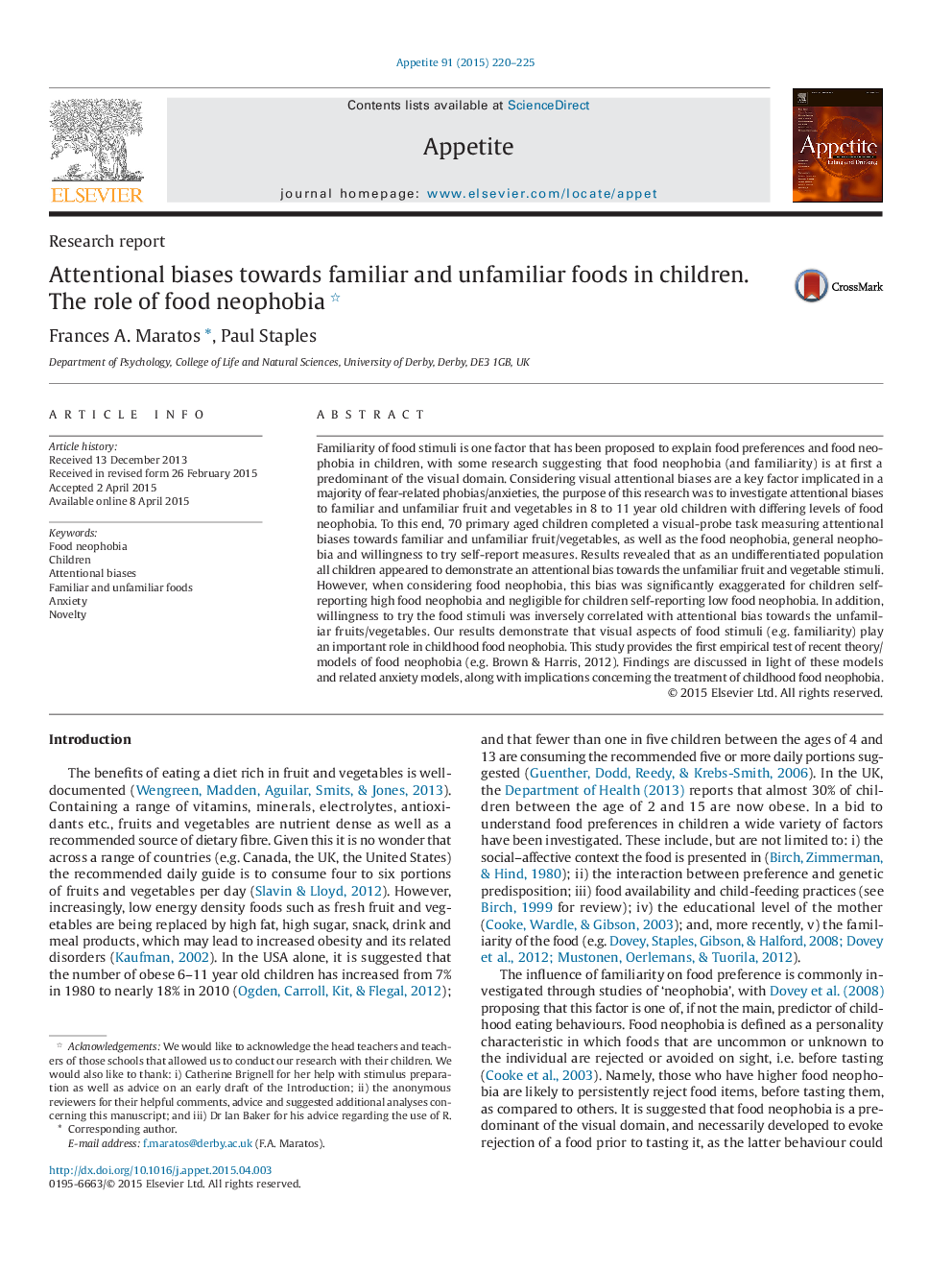| Article ID | Journal | Published Year | Pages | File Type |
|---|---|---|---|---|
| 7308732 | Appetite | 2015 | 6 Pages |
Abstract
Familiarity of food stimuli is one factor that has been proposed to explain food preferences and food neophobia in children, with some research suggesting that food neophobia (and familiarity) is at first a predominant of the visual domain. Considering visual attentional biases are a key factor implicated in a majority of fear-related phobias/anxieties, the purpose of this research was to investigate attentional biases to familiar and unfamiliar fruit and vegetables in 8 to 11 year old children with differing levels of food neophobia. To this end, 70 primary aged children completed a visual-probe task measuring attentional biases towards familiar and unfamiliar fruit/vegetables, as well as the food neophobia, general neophobia and willingness to try self-report measures. Results revealed that as an undifferentiated population all children appeared to demonstrate an attentional bias towards the unfamiliar fruit and vegetable stimuli. However, when considering food neophobia, this bias was significantly exaggerated for children self-reporting high food neophobia and negligible for children self-reporting low food neophobia. In addition, willingness to try the food stimuli was inversely correlated with attentional bias towards the unfamiliar fruits/vegetables. Our results demonstrate that visual aspects of food stimuli (e.g. familiarity) play an important role in childhood food neophobia. This study provides the first empirical test of recent theory/models of food neophobia (e.g. Brown & Harris, 2012). Findings are discussed in light of these models and related anxiety models, along with implications concerning the treatment of childhood food neophobia.
Related Topics
Life Sciences
Agricultural and Biological Sciences
Food Science
Authors
Frances A. Maratos, Paul Staples,
